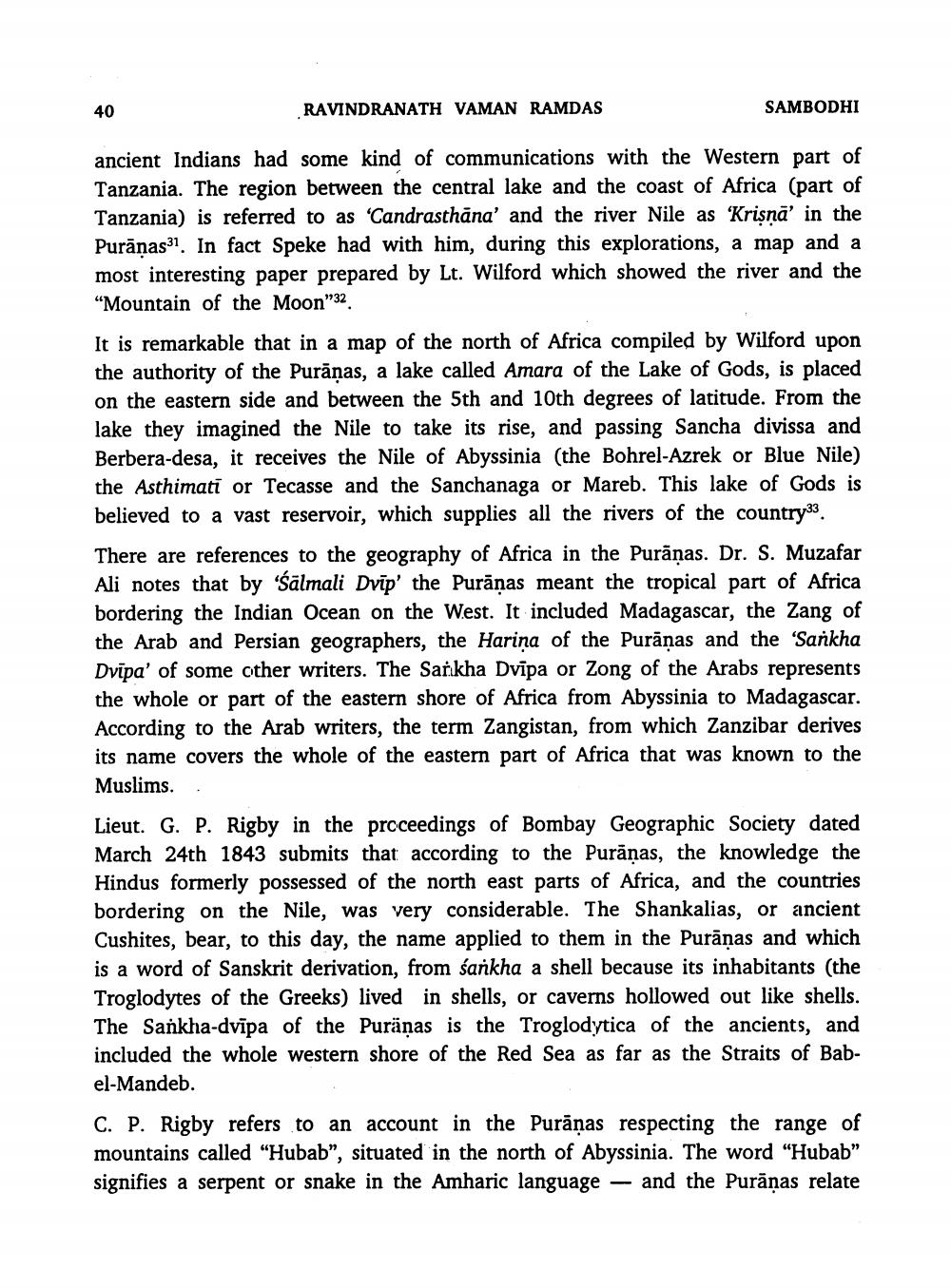________________
40
RAVINDRANATH VAMAN RAMDAS
SAMBODHI
ancient Indians had some kind of communications with the Western part of Tanzania. The region between the central lake and the coast of Africa (part of Tanzania) is referred to as 'Candrasthāna' and the river Nile as 'Krişņā' in the Purāņas31. In fact Speke had with him, during this explorations, a map and a most interesting paper prepared by Lt. Wilford which showed the river and the "Mountain of the Moon"32. It is remarkable that in a map of the north of Africa compiled by Wilford upon the authority of the Purāņas, a lake called Amara of the Lake of Gods, is placed on the eastern side and between the 5th and 10th degrees of latitude. From the lake they imagined the Nile to take its rise, and passing Sancha divissa and Berbera-desa, it receives the Nile of Abyssinia (the Bohrel-Azrek or Blue Nile) the Asthimati or Tecasse and the Sanchanaga or Mareb. This lake of Gods is believed to a vast reservoir, which supplies all the rivers of the country33. There are references to the geography of Africa in the Purāṇas. Dr. S. Muzafar Ali notes that by 'śālmali Dvīp' the Purānas meant the tropical part of Africa bordering the Indian Ocean on the West. It included Madagascar, the Zang of the Arab and Persian geographers, the Hariņa of the Purāņas and the 'Sarkha Dvīpa' of some other writers. The Sarkha Dvīpa or Zong of the Arabs represents the whole or part of the eastern shore of Africa from Abyssinia to Madagascar. According to the Arab writers, the term Zangistan, from which Zanzibar derives its name covers the whole of the eastern part of Africa that was known to the Muslims..
Lieut. G. P. Rigby in the proceedings of Bombay Geographic Society dated March 24th 1843 submits that according to the Purāņas, the knowledge the Hindus formerly possessed of the north east parts of Africa, and the countries bordering on the Nile, was very considerable. The Shankalias, or ancient Cushites, bear, to this day, the name applied to them in the Purānas and which is a word of Sanskrit derivation, from sarkha a shell because its inhabitants (the Troglodytes of the Greeks) lived in shells, or caverns hollowed out like shells. The Sankha-dvīpa of the Puräņas is the Troglodytica of the ancients, and included the whole western shore of the Red Sea as far as the Straits of Babel-Mandeb.
C. P. Rigby refers to an account in the Puranas respecting the range of mountains called "Hubab", situated in the north of Abyssinia. The word "Hubab" signifies a serpent or snake in the Amharic language — and the Purānas relate




